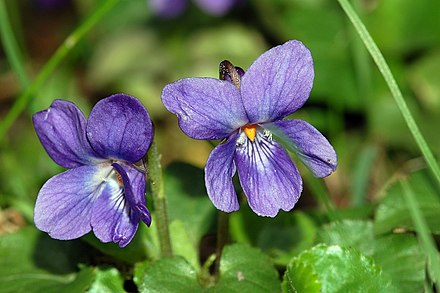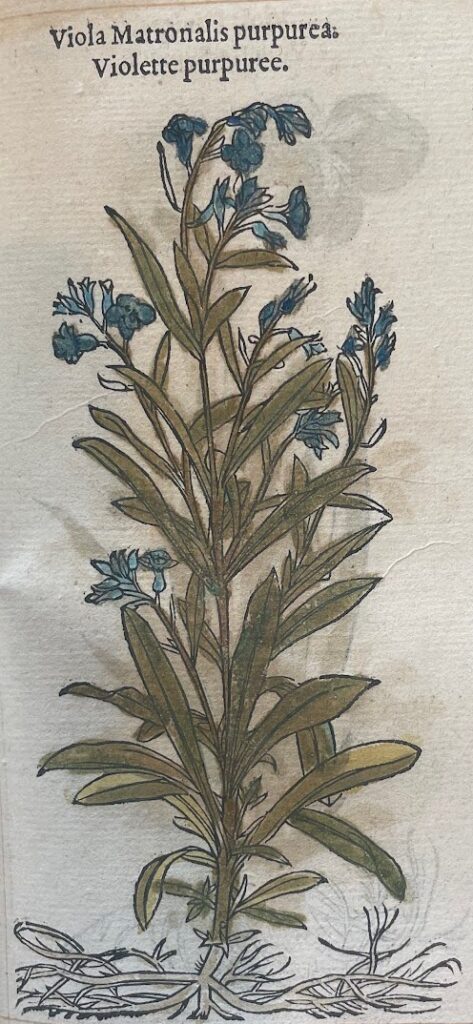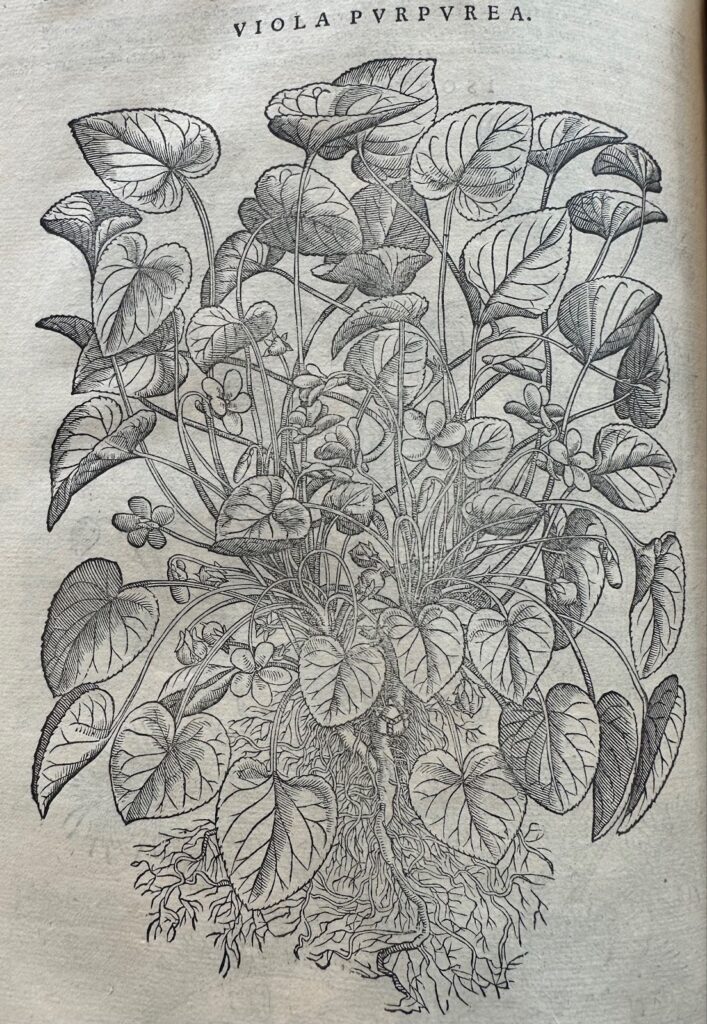Scientific Name: Viola odorata in the Violaceae family
Origin: Europe and Asia
Description: Violets often have green heart-shaped petals but it could vary in shapes depending on the species. They typically have five purple and blue petals but they can also appear white or yellow (Gupta, 2024).
Historical Medicinal Use: In Fouquet’s recipes, violet syrup is added to a mixture of almond oil and herbal tea and drank before going to bed to remedy a cold. Others discussed the violet having medicinal benefits such as being a laxative or helping inflammation of the urinary tract or hemorrhoids. It was also recommended to make a boiled infusion of violets with brandy to treat for laryngitis, bronchitis and tonsillitis.
Modern Medicinal Use: Doctors today have said that, internally, violets are recommended for broncho-pulmonary conditions such as a simple cough or bronchitis. It could also be used to appease symptoms of indigestion or mild poisoning. Externally, when diluted in a bath for example, it aids in reducing rheumatic pain as well as reducing insomnia or stress (Cardenas, 2017).
Cardenas, Jesus. “Violette Odorante.” Doctissimo, 27 Jan. 2017, www.doctissimo.fr/html/sante/phytotherapie/plante-medicinale/violette-odorante.htm.
Gupta, Kanchan, et al. “Viola.” Encyclopædia Britannica, Encyclopædia Britannica, inc., 25 Mar. 2024, www.britannica.com/plant/Viola-plant-genus#:~:text=Physical%20description,-floral%20symmetry&text=The%20flower%2C%20variable%20in%20colour,separate%20stalks%20(stemless%20violets).
“Violette Histoire Médicale.” Books of Dante, booksofdante.wordpress.com/tag/violette-histoire-medicale/.
De Fouquet, Marie. Recueil des remèdes faciles et domestiques, choisis et expérimentés, et très approuvés pour toutes sortes de maladies internes et externes, et difficiles à guerir. 1685.
Fuchs, Leonhart. Histoire des plantes. 1549.
Andrea Mattioli, Pietro. Pietri Andreae Mattholi senensis medici Commentarii in sex libros Pedacii Dioscoridis Anazarbei De medica materia. 1565.


